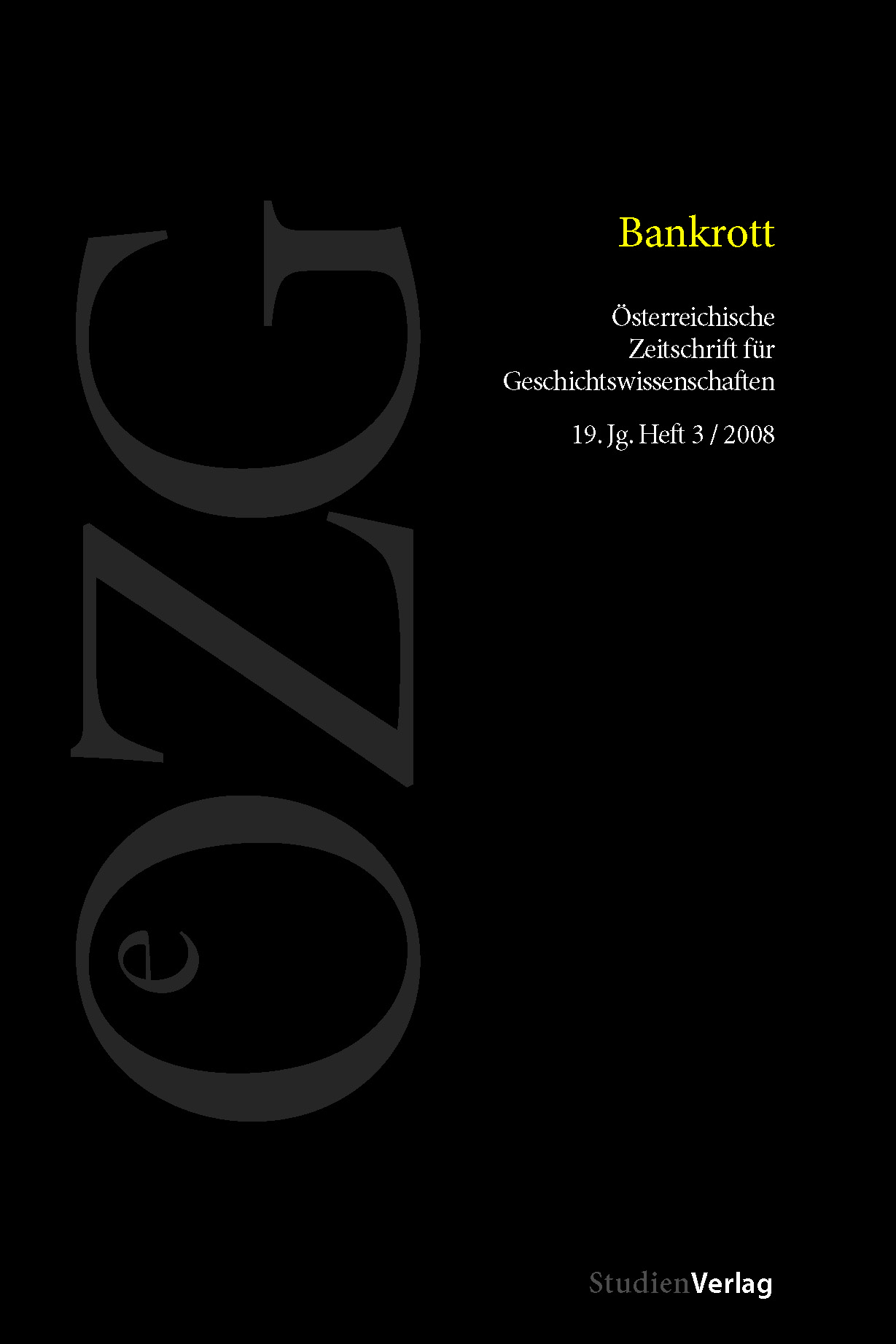Staatsmacht und geschäftliches Scheitern
Der Bankrott der Handelsgesellschaft Ambrosius und Hans, Gebrüder Höchstetter, und Mitverwandte im Jahr 1529
DOI:
https://doi.org/10.25365/oezg-2008-19-3-3Abstract
The notorious collapse of the firm Ambrosius Höchstetter und Mitverwandte is one of the first and best documented cases of bankruptcy in early modern European history. The spectacular ambitions that led to it – the attempt to create a cartel in mercury production and sale – and the no less spectacular ruin that resulted from it – the flight or arrest of the principals, one of whom died in prison – make for a tale of intrigue that reaches from the smelting works of Tyrol through the counting houses of Augsburg to the archducal treasury in Innsbruck. The Höchstetter bankruptcy reveals the inner practices and structures of early modern capitalism, the often tense relationships between capitalist financiers, the hierarchical societies they were part of, and the connections between private enterprises and public finance. After a brief narrative of the Höchstetters’ rise and fall, during the course of the late fifteenth and early sixteenth century, the article addresses capitalist practices with specific regard to the mercury cartel. Because the Habsburgs were leading figures in plans to create a mercury cartel, their attitudes toward it provide a bridge into the final theme, the connections between private enterprise and public finance. The Höchstetter bankruptcy set the parameters for the many proceedings that followed in southern Germany during the sixteenth and seventeenth centuries. Its study is an essential point of departure for any larger consideration of bankruptcies in the economic or political history of the Holy Roman Empire.


